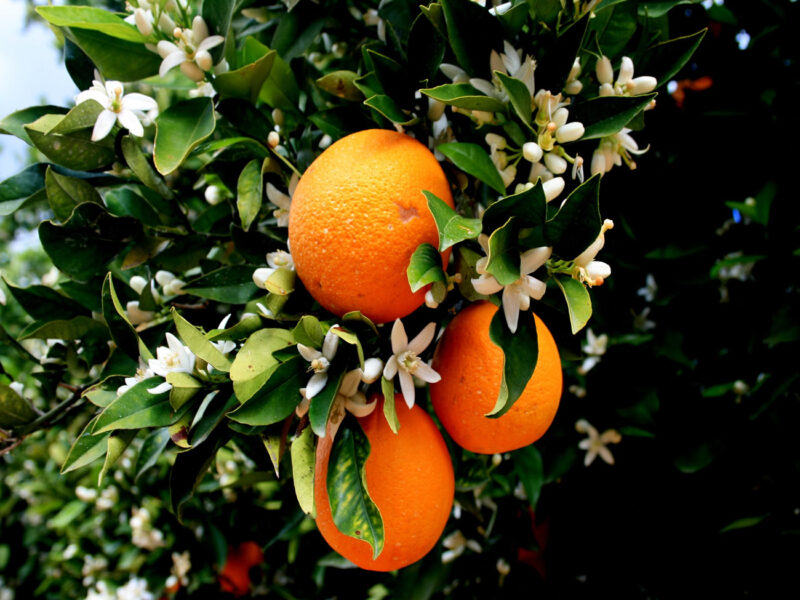Tropical fruit trees can improve health, reduce hunger, boost incomes and fight climate change; so why don’t we grow and eat more?
Two of humanity’s biggest problems – the climate crisis and abysmal eating habits – can partly be solved by a single healthful alternative: eating more meals from trees, especially tropical fruits. While international trends in agriculture and diets are not easily reversed, scientists say that creating incentives to raise and eat more mangos, avocados and Brazil nuts – and dozens of tree-sourced foods most people have never heard of – can be both viable and sustainable.
Writing in People and Nature, researchers summarize the myriad nutritional, economical and environmental-health potential of increasing the intake and production of tropical fruits. They provide an overview of advantages from tree-sourced foods concerning nutrition and go over the barriers and risks of scaling up supply to a global level.
“Planting the right type of trees in the right place can provide nutritious foods to improve diets sustainably while providing other valuable ecosystem services such as carbon sequestration,” said Merel Jansen, the lead author from ETH Zurich and the Center of International Forestry Research. “It also can contribute to development issues related to poverty reduction, biodiversity conservation, and food security.”
Regardless of the diversity of plants – they found more than 7,000 – the worldwide food system is based on extraordinarily low diversity. Nearly half of the calories consumed by people come from just four crops: wheat, rice, sugarcane and maize. The overconsumption of these energy-rich but nutrient-poor foods – in conjunction with underconsumption of more nutritious foods – has contributed considerably to malnutrition, which afflicts some two billion people. In addition, their farming has generated widespread losses of biodiversity and contributed to climate change.
International food programs characterized by the cultivation and consumption of meals that simultaneously deliver nutritional, environmental and health advantages. Because tropical tree species, which may exceed 50,000, have this potential they can be a critical part of the solution, say the authors.
“Leveraging the diversity and local knowledge of tree species in tropical landscapes offers an excellent nature-based solution to match the rising global demand for diversified, healthy and sustainable diets, and to re-valuate native tree species and local farming practices,” said Chris Kettle, the principal investigator of this work, from the ETH Zurich and Alliance of Bioversity International and CIAT.
The world’s countless millions of smallholder farmers, who’ve been pushed aside by the industrialization of food programs, have the potential to be crucial players in food system conversion. With the right incentives, investments and involvement, smallholder farms could scale up agroforestry systems to produce more, wholesome food, while simultaneously diversifying their income sources.
Marginalized groups and females also stand to profit from tree-sourced food resources, particularly when the foods are harvested from trees that aren’t planted but grow thickly or and possess the possibility of natural regeneration that can be managed. That is because, in part, female farmers generally have restricted access to land, credit and other resources.
There are many clear opportunities to incorporate food-producing trees into landscapes. The majority of global cropland doesn’t feature tropical fruit trees but has a large potential for doing this.
Avoiding pitfalls
Increased demand for tree-sourced tropical fruit produce has potential downsides. Avocado farms in Mexico, made profitable by increased demand north of the border, have been recently targeted by organized crime. Dependency on single products can lead to widespread shocks when prices dropped, as has occurred to cacao farmers in Côte d’Ivoire.
“A combination of interventions by states, markets and civil society across the supply chain – from producers to consumers – is necessary to guarantee that increases in demand are supplied from sustainable production systems that are diverse, and that will not lead to large-scale deforestation or other unwanted side effects,” said Jansen.
To create increased tropical fruit tree-sourced food production to be an integral part of the international food system conversion, the authors suggest the following:
Consumer need: More information should reach customers about tree-source food. “To radically change diets, extensive behavioral change campaigns will likely be necessary, especially to increase the consumption of underutilized nutritious and healthy foods,” the authors say.
Land tenure: One barrier to the execution of tree-based food manufacturing systems is insecure land tenure rights. These are especially important since tree-crops can call for considerable up-front costs and return on investment may take years. Secure land rights are considered crucial to overcoming these barriers.
Investment costs and pay-back period: Intercropping with annual crops, payment for ecosystem services, redirecting annual crop subsidies, and provision of micro-credits to establish tropical fruit agroforestry systems can create funding opportunities. These can help alleviate large investment costs and lengthy pay-back times.
Supply chain development: Building supply chains for possibly popular products is vital for rural communities to get markets. NGOs, private investors and the public sector can contribute.
Genetic resources which underpin diversity is crucial for crop tropical fruit tree systems to thrive. Additionally, reliable seed resources and seedlings need to be available for the establishment of tree crop farms.
Technological development: Development of propagation methods, planting techniques and post-harvest technology for now undomesticated trees can help to better use the enormous diversity of trees in our food systems.
Including cost shocks and ecological degradation, sustainable crop tropical fruit tree systems must include an assortment of plants and crops.
Related Journal Article: https://besjournals.onlinelibrary.wiley.com/doi/10.1002/pan3.10159

